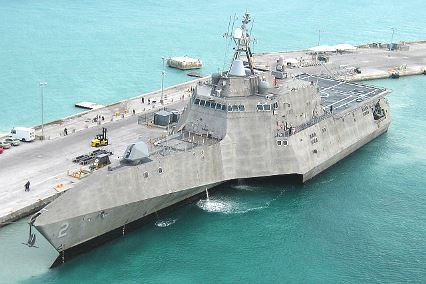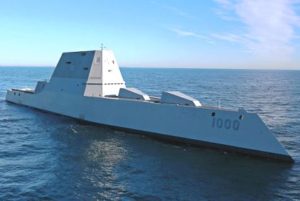A US Government report ‘Technology for the United States Navy and Marine Corps, 2000-2035′ reveals progress towards building electric warships. This extends beyond electric and electronic systems to propulsion.

The project envisages possible retrofitting of hybrid and pure electric technology into the existing fleet, and perhaps making these the future standard.
The report confirms ‘the soundness of the concept, the achievability of enabling technologies, and the opportunity to initiate a major change in the generation and use of electric power aboard ship.
The Benefits of Electric Warships
It defines three main benefits. Integrated power and electric systems will enhance combat system effectiveness. The lack of gear trains and propeller shafts will promote ‘survivability’. Finally, the quieter motors will reduce the ship’s acoustic footprint especially when in stealth mode.
Further benefits include freeing space for other purposes, and reducing crew complements. There is also the possibility of standardizing propulsion units across the fleet.

The panel is considering five classes of energy storage and electric-power recovery technologies. These are batteries, flywheels, inductive energy storage, capacity energy storage, and compressed gas or steam.
It thinks batteries ‘show the greatest promise’, although flywheels ‘may provide some capability in hybrid vehicle propulsion systems.’
The US Navy Battery Review
The report favors batteries since the science of energy storage is fundamentally secure and has an energetic research profile. The panel concludes that integrated power systems make economic sense for electric warships. It predicts increased military dependence on electric power in future in terms of electronics and electrically driven weapon systems
The report closes with a comment that ‘large-scale use of power electronic devices in close-coupled systems causes harmonic problems at levels rarely encountered in utility or industrial environments’. It seems this is the next bridge to cross in the development of electric warships.
Related
Why There are Lead-Acid Batteries on Submarines
Conductive Clay Creates More Possibilities for Energy Storage




